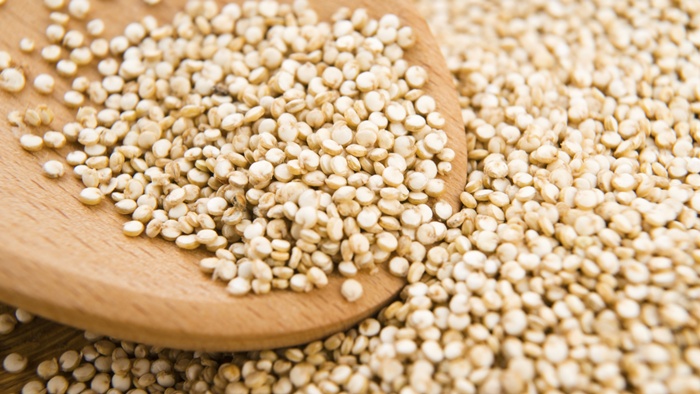
The United Nations called 2013 the International Year of Quinoa. And with good reason. The grain-like seed is a protein powerhouse, a staple of the Aztec diet for several thousand years.
North Americans have been jumping on the quinoa bandwagon as a protein-packed alternative to grains like couscous and basmati rice, but what about its little known cousin, often referred to as “baby quinoa?”
Canahua (pronounced kan-ya-wa) is less bitter and has smaller, crunchier seeds than trendy quinoa, scoring high on the taste front. It has grabbed little market attention or research backing, although it has enormous potential as a food source. Canahua and quinoa are both native to South America and grown mainly off the Andean highlands of Bolivia and Peru. Quinoa is thriving with 6,956 tonnes exported from Peru in 2011 alone, while the modest canahua has been harvested on about 7,000 hectares for the past 20 years. It’s called an “orphan crop” lost in the quinoa craze of late—but it deserves our attention.
Canahua a Protein and Fiber Winner
For a smaller seed, canahua is even more nutritious than its larger cousin. Canahua and quinoa are similar in that they both are gluten-free and contain the nine essential amino acids, but canahua contains 7 g of protein in a quarter cup compared with 5.57 g in the same amount of quinoa. It also has half the fat content, and contains 6 g of dietary fiber compared to 2.51 g in quinoa.
Another bonus is the quarter cup of canahua has 61 mg of calcium, compared to 25.5 mg in quinoa. In fact, high-calcium canahua once was used to wean infants from their mothers’ milk! This potent antioxidant is also high in iron and zinc.
Prepare canahua the same way as you would your quinoa. Add a cup of water to a quarter cup to cook. Or you can add it to hot cereals, soups, stews, juices, shakes or smoothies for nutrients and added protein. You can also grind canahua into a powder and use as flour for baking and making pasta.
What makes this plant food source such a valuable crop is its ability to adapt to climate changes, from hot temperatures to rainfalls in Bolivia, for example, and it is also considered frost resistant. It’s considered one of the crops better prepared for climate change, far out-ranking popular quinoa.
Canahua Crop at Risk?
While the crop has been feeding South American villages, it has not cultivated a following in the Western world. The lack of demand in Western health food stores or supermarkets puts canahua at risk. Local farmers opt to grow exportable quinoa, which is reportedly easier to harvest, has double the yield and can fetch four times the price. Agronomists argue that research (if the dollars could be secured) could reduce the harvest and yield problems, and turn canahua into a more rewarding crop for farmers.
It may be time that the Western world took advantage of such a nutrient-rich seed. Even though it isn’t well known, canahua has nutritional benefits that shouldn’t be overlooked just because it hasn’t hit the mainstream.
Sources:
“2013, The International year of Quinoa,” Whole Grains Council website, June 6, 2012; http://wholegrainscouncil.org/newsroom/blog/2012/06/2013-the-international-year-of-quinoa.
“Calories in generic Dry Canahua,” Myfitnesspal website; http://www.myfitnesspal.com/food/calories/generic-dry-canahua-28859037, last accessed June 16, 2014.
Repo-Carrasco-Valencia, R., et al., “Effects of roasting and boiling of quinoa, kiwicha and kaniwa on composition and availability of minerals in vitro,” Wiley Interscience website, May 20, 2010; http://www.proinpa.org/phocadownload/articulos/Canahua/effects%20of%20roasting%20and%20boiling%20of%20quinoa%20kiwicha%20and%20kaiwa%20on%20composition%20and%20availability%20ofminerals%20in%20vitro.pdf.












